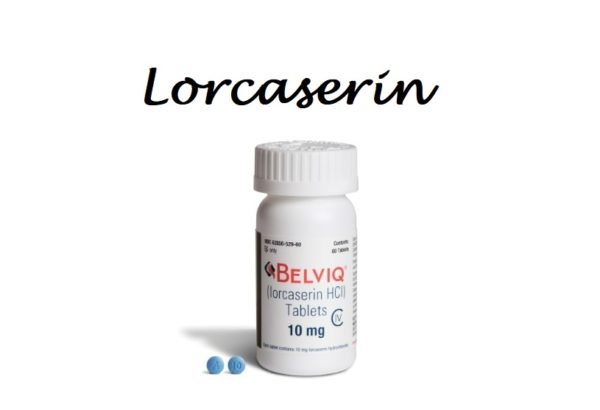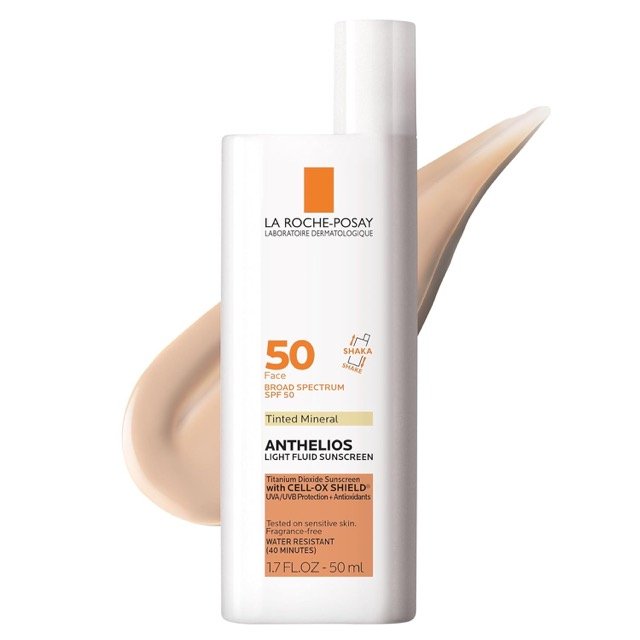Lorcaserin (generic name) is available by the brand name of Belviq and Belviq-XR. It is a serotonin receptor agonist (5 HT 2C). It acts on the neuronal receptors present in the hypothalamus that is responsible for satiety. Other drugs (fenfluramine and dexfenfluramine) also act on these receptors, however, since these drugs are non-selective, they are associated with more adverse events. It is used in obese adults with a Body mass index (BMI) of 30 kg//m² or more for weight loss as an adjunct to diet and exercise. It is also used for weight loss in adults with a BMI of 27 kg/m² or more and at least one weight-related comorbid condition such as diabetes mellitus, dyslipidemia, and hypertension.
Difference between Bleviq and Belviq-XR (Lorcaserin immediate and delayed-release formulations:
The major difference between the two formulations is the rate of absorption that is reflected by the time to reach the peak serum concentrations. Belviq has a half-life elimination of 11 hours while Belviq-XR has a half-life elimination of 12 hours. Belviq reaches the peak serum concentration in 1 - 2 hours while Belviq-XR reaches its peak serum concentration in about 10 hours.
How much weight loss is expected with lorcaserin (Belviq average weight loss)?
In the BLOSSOM study, around 4000 patients were enrolled. Lorcaserin was given as 10 mg once daily and twice daily. Compared to placebo, individuals receiving lorcaserin 10 mg and 20 mg had a significantly greater weight loss. 5% weight loss occurred in 25%, 40.2%, and 47.2% in the placebo group, 10 mg once daily group, and 10 mg twice daily group respectively [Ref]. On average, patients in the lorcaserin group lost 5.8 kgs (2.9 kgs more than in the placebo group). Another study reported a weight loss of 8.2% from the baseline or 8.1 Kgs compared to 3.3 kgs weight loss in the placebo group. The incidence of FDA defined valvulopathy was not significantly increased in any of the studies [Ref].
Lorcaserin in obese diabetic patients:
In the BLOOM-DM trial, obese diabetic patients in the lorcaserin group had a greater weight loss compared to obese diabetic patients in the placebo group. Individuals who received the study drug had a weight loss of 5.5% (more than three times that of the placebo group). A significant improvement was noticed in the glycemic control in the lorcaserin group compared to placebo. More patients in the study group had to reduce their anti-diabetic medications and the risks of hypoglycemia were increased in the study group [Ref].
Comparisons of different Prescription weight loss pills:
In terms of efficacy, the most effective weight loss drugs are:
- Phenteramine and topiramate (Qsymia) followed by
- Liraglutide and
- Lorcaserin
Belviq vs phentermine (Belviq and Qsymia (Lorcaserin and Phenteramine/ topiramate):
Belviq (Lorcaserin) |
Phentermine and topiramate (Qsymia) |
|
| Brands available |
|
|
| Year of approval | 2012 | 2012 |
| MOA | Serotonin receptor (5-HT 2C) agonist | Phenteramine is a sympathomimetic Topiramate is an antiepileptic (MOA in obesity is not clear) |
| Contraindications | Pregnancy |
|
| Dosage | 10 mg Belviq twice daily or 20 mg Belviq XR once daily | Qsymia 3.75 mg/ 23 mg (phentermine 3.75 mg and topiramate 23 mg). Titrate the dose every 2 weeks up to a maximum dose of 15/92 mg (phentermine 15 mg and topiramate 92 mg). |
| Timing of drug intake | Belviq is taken in the morning. Belviq XR is taken in the evening | Qsymia is taken in the morning (Avoid in the evening as it may cause insomnia) |
| Percentage of patients losing greater than 5% body weight compared to placebo | Belviq 10 mg twice daily:
|
Qsymia 15/92 mg (phentermine 15 mg and topiramate 92 mg):
|
| Percentage of patients losing greater than 10% body weight compared to placebo | Belviq 10 mg twice daily:
|
Qsymia 15/92 mg (phentermine 15 mg and topiramate 92 mg):
|
| Absolute weight loss (Kgs) | Belviq 10 mg twice daily
|
Qsymia 3.75/ 23 mg:
|
| Monthly cost | $199.8 |
|
Belviq and Wellbutrin (bupropion)/ Contrave (Naltrexone/ bupropion):
Belviq (Lorcaserin) |
Naltrexone and bupropion |
|
| Brands |
|
|
| Year of approval | 2012 | 2014 |
| MOA | Serotonin receptor (5-HT 2C) agonist | Naltrexone is an opioid antagonist. Bupropion is an antidepressant. |
| Contraindications | Pregnancy |
|
| Dosage | 10 mg Belviq twice daily or 20 mg Belviq XR once daily | Extended-release tablets of 8 mg/90 mg (naltrexone HCl 8 mg and bupropion HCl 90 mg).
|
| Timing of drug intake | Belviq is taken in the morning. Belviq XR is taken in the evening | It is initiated in the morning as a single tablet. The dose is then increased to twice daily. |
| Percentage of patients losing greater than 5% body weight compared to placebo | Belviq 10 mg twice daily:
|
Naltrexone and bupropion 16 mg/180 mg bid:
|
| Percentage of patients losing greater than 10% body weight compared to placebo | Belviq 10 mg twice daily:
|
Naltrexone and bupropion 16 mg/180 mg bid:
|
| Absolute weight loss (Kgs) | Belviq 10 mg twice daily
|
? |
| Percent of patients discontinuing drug due to its side effects | 8.6% | 24% |
| Monthly cost | $359.4 | $333.6 |
Belviq for seizures:
A retrospective case series of children with refractory epilepsy were studied. It was found that lorcaserin in children and young adults was effective in reducing motor seizure activity. 50% reduction was seen in Lennox-Gastaut syndrome, 43% in Dravet syndrome [DS]), and 23% in other epilepsies with belviq use [Ref].
Lorcaserin FDA cancer Warning:
On the 14th of January, 2020, the FDA has issued a warning to alert the healthcare workers and the public who are using lorcaserin regarding the possible risks of cancer associated with its use. Individuals who are currently using it are advised to seek advice from their healthcare providers [Ref].
Lorcaserin discontinued in the US:
Lorcaserin has been discontinued in the US because of the increased incidence of cancer risk. On February 13th, the drug was discontinued because of the more than 500 reported cases of primary cancers in patients using lorcaserin in a study. Most of the cancers in patients using lorcaserin were pancreatic, colorectal, and lung cancers. The FDA advised the patients to stop taking the drug and return the drug to a take-back store or facility. If not, dispose of the drug by mixing with dirt, litter, used coffee ground, and put them in a plastic bag and discard them in the trash [Ref]. [bg_collapse view="button-blue" color="#f7f2f2" icon="arrow" expand_text="Adult dose" collapse_text="Adult dose" ]
Dose in Weight management:
Note: Treatment should be discontinued if the patient does not lose at least 5% of the bodyweight after 12 weeks.
-
Belviq-XR (extended-release) dosage:
- 20 mg orally once a day (maximum dose is 20 mg/day).
-
Belviq (Immediate-release) dosage:
- 10 mg orally two times a day (maximum dose is 20 mg/day).
Belviq dosage times:
It may be taken at any time of the day with or without a meal. However, the immediate-release formulations should be taken after breakfast to reduce daytime satiety.
What is the best time of day to take belviq XR?
The best time to take Belviq-XR is after dinner. Since the time to reach the peak serum concentration is about 10 hours, it should be taken after dinner to reduce the day time hunger.
Lorcaserin is not recommended for use in children.
Pregnancy Risk Factor X
- Lorcaserin is contraindicated during pregnancy due to its potential harm to the foetus, and the lack of clinical benefits.
- Additionally, maternal weight gain can be vital for the growth of the fetus. Therefore, weight loss treatments during pregnancy are not recommended.
Use during breastfeeding:
- It is not known if the drug is excreted in breastmilk. However, it is not recommended that the drug be used by lactating mothers.
- It can alter the concentration of maternal prolactin and, therefore, impair breastfeeding.
Belviq dose in kidney disease:
-
Mild impairment (CrCl >50 mL/minute):
- Adjustment in the dosage is not necessary.
-
Moderate impairment (CrCl 30 to 50 mL/minute):
- The manufacturer has not recommended any adjustments in the dose.
- It should be used with caution as the half-life of some of its metabolites may be increased.
-
Severe impairment (CrCl <30 mL/minute):
- Avoid using it in severe renal impairment.
-
ESRD:
- Avoid using it in patients on hemodialysis.
- Hemodialysis does not remove the drug or its metabolites from the body.
Belviq dose in Liver disease:
-
Mild to moderate impairment (Child-Pugh class A and B):
- Adjustment in the dose is not necessary.
-
Severe impairment (Child-Pugh class C):
- Since it undergoes extensive hepatic metabolism, it should be used with caution in patients with liver disease.
- The manufacturer has not recommended any dose adjustment in patients with liver disease (it has not been studied in these patients).
(Belviq) Lorcaserin Side Effects (Common):
-
Central Nervous System:
- Headache
-
Endocrine & Metabolic:
- Hypoglycemia
-
Hematologic:
- Abnormal Lymphocytes
-
Neuromuscular & Skeletal:
- Back Pain
-
Respiratory:
- Upper Respiratory Tract Infection
- Nasopharyngitis
(Lorcaserin) Belviq-XR and Belviq side effects (less common):
-
Cardiovascular:
- Hypertension
- Peripheral Edema
- Decreased Heart Rate
- Acquired Valvular Heart Disease
-
Central Nervous System:
- Dizziness
- Fatigue
- Anxiety
- Insomnia
- Depression
- Stress
- Cognitive Dysfunction
- Psychiatric Disturbance
-
Endocrine & Metabolic:
- Increased Serum Prolactin
- Exacerbation Of Diabetes Mellitus
-
Gastrointestinal:
- Nausea
- Diarrhea
- Constipation
- Xerostomia
- Vomiting
- Gastroenteritis
- Toothache
- Decreased Appetite
-
Genitourinary:
- Urinary Tract Infection
-
Hematologic:
- Decreased Hemoglobin
- Decreased Neutrophils
-
Hypersensitivity:
- Seasonal Allergy
-
Neuromuscular & Skeletal:
- Muscle Spasm
- Musculoskeletal Pain
-
Ocular:
- Eye Disease
-
Respiratory:
- Cough
- Oropharyngeal Pain
- Sinus Congestion
Lorcaserin Contraindication:
- Allergy to any of the ingredients or the drug itself
- Pregnancy.
Warnings and precautions
-
CNS depression:
- It can cause CNS depression.
- Patients might experience somnolence and confusion, fatigue, lethargy or fatigue, memory impairment, difficulty with concentration, cognitive impairment, and memory impairment.
- Avoid using it if you are a driver or operator of heavy machinery, or if you have mental tasks.
-
Hematological effects
- Regularly monitor your blood CBC.
- It can cause hematological toxicities such as anemia, lymphopenia, thrombocytopenia and leukopenia.
-
Hyperprolactinemia:
- Hyperprolactinemia may occur.
- Although the average prolactin level is less than twice that of the ULN, reports have indicated more severe levels (more than five times the ULN).
- Patients with hyperprolactinemia, such as galactorrhea or gynecomastia, should have their serum levels tested.
-
Priapism
- Penile erection can be prolonged.
- To avoid permanent penile damage, individuals who experience erections lasting more than four hours should immediately seek emergency medical attention.
- Avoid its use if you are at high risk for priapism, such as people with sickle cell disease, multiple myeloma, and leukemia, or men with penile anatomical defects like penile angulation, penile fibrosis, and Peyronie.
-
Primary pulmonary hypertension
- Pulmonary hypertension is possible in patients who have been treated with serotonergic weight loss drugs.
- Although data on this association are limited, it should still be considered with caution for patients at high risk of developing pulmonary hypertension.
- Pulmonary hypertension should be considered for patients with dyspnea.
-
Psychiatric disorders
- There may be psychiatric manifestations such as euphoria, hallucinations and dissociation syndrome.
- Stop taking the medication if you notice a depressive episode or a person who has suicidal thoughts, behavior changes, or a worsening mood.
-
Neuroleptic malignant syndrome (NMS), and serotonin syndrome are both similar reactions.
- Serotonergic patients taking lorcaserin or other serotonergic drugs are at high risk for serotonin syndrome or NMS-like reactions.
- These reactions can manifest as tremors and myoclonus, agitation or hyperthermia, muscle rigidity or autonomic instability, mental changes, and tremors.
- Patients taking concomitant serotonergic drugs such as triptans and SNRIs or SSRIs, TCAs (TCAs), bupropion, St John's wort, and Tryptophan are particularly at risk.
- Patients on antidopaminergic agents like antipsychotics and drugs that impair the metabolism of serotonin such as MAO inhibitors, dextromethorphan, tramadol, and lithium are also at an increased risk of developing the serotonin syndrome and NMS-like reactions.
- If any of these symptoms are present, it is important to stop all treatment immediately.
-
Heart disease of the valvular kind:
- Increased risk of developing cardiac valvular diseases has been linked to drugs that have potent serotonergic activities, such as dexfenfluramine, cabergoline and fenfluramine.
- Serotonrgic agents activate the interstitial heart cells via the 5HT-2b receptors.
- It has a higher affinity for 5HT-2c receptors at therapeutic doses than 5HT-2b receptors.
- While studies on the causality between valvular disease and Belviq have not been conclusive, patients who experience a new-onset murmur or dyspnea, heart attack, heart failure, or edema should still be examined.
- These patients should be treated immediately.
-
Cardiovascular disease
- It has been associated with symptoms of bradycardia.
- Patients suffering from baseline bradycardia (second- or third-degree) or heart block should be cautious about taking the drug.
- Patients with heart disease have a high level of serotonin receptors. Patients with heart failure are at greater risk for valvular disease.
- According to the AHA it could cause myocardial toxicity.
-
Diabetes:
- An increase in weight may lead to a decrease in the need for antidiabetic medication.
- Patients with diabetes should be instructed to keep an eye on their blood sugar levels to prevent hypoglycemia.
-
Hepatic impairment
- Hepatic metabolism is extensive for this drug.
- Patients with severe liver impairment should use it with caution.
-
Renal impairment
- It should be used with caution for patients with mild renal impairment.
- It should not be used in severe renal impairments or end-stage kidney disease.
Lorcaserin: Drug Interaction
|
Risk Factor C (Monitor therapy) |
|
|
Ajmaline |
CYP2D6 Inhibitors (Moderate) may increase the serum concentration of Ajmaline. |
|
Amphetamines |
CYP2D6 Inhibitors (Moderate) may increase the serum concentration of Amphetamines. |
|
ARIPiprazole |
CYP2D6 Inhibitors (Moderate) may increase the serum concentration of ARIPiprazole. Management: Monitor for increased aripiprazole pharmacologic effects. Aripiprazole dose adjustments may or may not be required based on concomitant therapy and/or indication. Consult full interaction monograph for specific recommendations. |
|
Brexpiprazole |
CYP2D6 Inhibitors (Moderate) may increase the serum concentration of Brexpiprazole. Management: If brexpiprazole is to be used together with both a moderate CYP2D6 inhibitor and a strong or moderate CYP3A4 inhibitor, the brexpiprazole dose should be reduced to 25% of the usual dose. |
|
CloZAPine |
CYP2D6 Inhibitors (Moderate) may increase the serum concentration of CloZAPine. |
|
Codeine |
CYP2D6 Inhibitors (Moderate) may diminish the therapeutic effect of Codeine. These CYP2D6 inhibitors may prevent the metabolic conversion of codeine to its active metabolite morphine. |
|
CYP2D6 Substrates (High risk with Inhibitors) |
CYP2D6 Inhibitors (Moderate) may decrease the metabolism of CYP2D6 Substrates (High risk with Inhibitors). Exceptions: Tamoxifen. |
|
Fesoterodine |
CYP2D6 Inhibitors may increase serum concentrations of the active metabolite(s) of Fesoterodine. |
|
Indoramin |
CYP2D6 Inhibitors (Moderate) may increase the serum concentration of Indoramin. |
|
Metoprolol |
CYP2D6 Inhibitors (Moderate) may increase the serum concentration of Metoprolol. |
|
Monoamine Oxidase Inhibitors (Type B) |
May enhance the serotonergic effect of Serotonergic Agents (Moderate Risk, Miscellaneous). This could result in serotonin syndrome. Management: Monitor for signs and symptoms of serotonin syndrome/serotonin toxicity (eg, hyperreflexia, clonus, hyperthermia, diaphoresis, tremor, autonomic instability, mental status changes) when these agents are combined. |
|
Nebivolol |
CYP2D6 Inhibitors (Moderate) may increase the serum concentration of Nebivolol. |
|
Phosphodiesterase 5 Inhibitors |
Lorcaserin may enhance the adverse/toxic effect of Phosphodiesterase 5 Inhibitors. Specifically, the risk of developing priapism may be increased. |
|
Pitolisant |
CYP2D6 Inhibitors (Moderate) may increase the serum concentration of Pitolisant. |
|
Propafenone |
CYP2D6 Inhibitors (Moderate) may increase the serum concentration of Propafenone. Management: Drugs listed as exceptions to this monograph are discussed in further detail in separate drug interaction monographs. |
|
Serotonergic Agents (High Risk) |
Lorcaserin may enhance the serotonergic effect of Serotonergic Agents (High Risk). This could result in serotonin syndrome. Management: Monitor for signs and symptoms of serotonin syndrome/serotonin toxicity (eg, hyperreflexia, clonus, hyperthermia, diaphoresis, tremor, autonomic instability, mental status changes) when these agents are combined. Exceptions: Amitriptyline; Amoxapine; ClomiPRAMINE; Desipramine; Dothiepin; Doxepin (Systemic); Doxepin (Topical); Imipramine; Lofepramine; Melitracen [INT]; Nortriptyline; Protriptyline; Sibutramine; Trimipramine. |
|
Serotonergic Agents (Moderate Risk, Miscellaneous) |
Lorcaserin may enhance the serotonergic effect of Serotonergic Agents (Moderate Risk, Miscellaneous). This could result in serotonin syndrome. Management: Monitor for signs and symptoms of serotonin syndrome/serotonin toxicity (eg, hyperreflexia, clonus, hyperthermia, diaphoresis, tremor, autonomic instability, mental status changes) when these agents are combined. Exceptions: Lorcaserin. |
|
Tamsulosin |
CYP2D6 Inhibitors (Moderate) may increase the serum concentration of Tamsulosin. |
|
Tricyclic Antidepressants |
Lorcaserin may enhance the serotonergic effect of Tricyclic Antidepressants. This could result in serotonin syndrome. Lorcaserin may increase the serum concentration of Tricyclic Antidepressants. Management: Monitor for signs and symptoms of serotonin syndrome/serotonin toxicity (eg, hyperreflexia, clonus, hyperthermia, diaphoresis, tremor, autonomic instability, mental status changes) and increased TCA concentrations and effects if these agents are combined. |
|
Risk Factor D (Consider therapy modification) |
|
|
BuPROPion |
May enhance the serotonergic effect of Lorcaserin. This could result in serotonin syndrome. Management: Seek alternatives to this combination when possible. |
|
DOXOrubicin (Conventional) |
CYP2D6 Inhibitors (Moderate) may increase the serum concentration of DOXOrubicin (Conventional). Management: Seek alternatives to moderate CYP2D6 inhibitors in patients treated with doxorubicin whenever possible. One U.S. manufacturer (Pfizer Inc.) recommends that these combinations be avoided. |
|
Eliglustat |
CYP2D6 Inhibitors (Moderate) may increase the serum concentration of Eliglustat. Management: Reduce the eliglustat dose to 84 mg daily. Avoid use of eliglustat in combination with a moderate CYP2D6 inhibitor and a strong or moderate CYP3A4 inhibitor. |
|
Perhexiline |
CYP2D6 Inhibitors may increase the serum concentration of Perhexiline. Management: Consider alternatives to this combination if possible. If combined, monitor for increased perhexiline serum concentrations and toxicities (eg, hypoglycemia, neuropathy, liver dysfunction). Perhexiline dose reductions will likely be required. |
|
Tamoxifen |
CYP2D6 Inhibitors (Moderate) may decrease serum concentrations of the active metabolite(s) of Tamoxifen. Specifically, CYP2D6 inhibitors may decrease the metabolic formation of highly potent active metabolites. Management: Consider alternatives with less of an inhibitory effect on CYP2D6 activity when possible. |
|
Risk Factor X (Avoid combination) |
|
|
Ergot Derivatives |
Lorcaserin may enhance the adverse/toxic effect of Ergot Derivatives. Specifically, use of these drugs together may increase the risk of developing valvular heart disease. Lorcaserin may enhance the serotonergic effect of Ergot Derivatives. This could result in serotonin syndrome. |
|
Sibutramine |
May enhance the adverse/toxic effect of Lorcaserin. Sibutramine may enhance the serotonergic effect of Lorcaserin. This could result in serotonin syndrome. |
|
Thioridazine |
CYP2D6 Inhibitors may increase the serum concentration of Thioridazine. |
Monitor:
- Weight
- Waist circumference
- CBC (complete blood counts)
- Blood glucose (especially in diabetics)
- Prolactin levels (if the patient notices any clinical features of hyperprolactinemia like galactorrhea or gynecomastia)
- Monitor for the clinical features of depression and/or suicidal behavior.
- Monitor for clinical features of neuroleptic malignant syndrome and serotonin syndrome.
- Monitor for edema, shortness of breath, and other features of valvular heart disease.
How to administer Lorcaserin (Belviq)?
Administer the drug with or without meals.
The extended-release tablets should be swallowed whole (avoid crushing, chewing, or dividing it).
Lorcaserin mechanism of action:
Lorcaserin (Belviq XR and Bleviq XR), stimulates 5-HT2c receptors. This stimulates pro-opiomelanocortin(POMC) neurons in hypothalamus (the Arcuate Nucleus). Through the stimulation of alpha-melanocortin at the melanocortin-4 receptive, this increases satiety and decreases food intake. It is more attracted to 5-HT 2c receptors than the other 5HT receptors. It crosses the blood-brain border and isdistributedThe cerebrospinal and CNS. Around 70% of the drug has a bound. plasma proteins. It isMetabolizedThe liver converts inactive metabolites into active metabolites. It has been ahalf-life eliminationBetween 11 and 12 hours (Belviq-XR and Belviq respectively). It takes approximately 11 to 12 hours to reach the destination.peak serum concentrationThe time for immediate-release formulations is approximately 1.5-2 hours, and the extended-release formulations takes about 10 hours. The majority of the drug (92%) can be found in pharmacies.excretedIn the urine.
Lorcaserin brands (International):
- Belviq
- Belviq XR
Lorcaserin brand name in Pakistan:
Lorcaserin (Belviq) is not available in Pakistan.









